Mounir El Asmar: Looking to fuse disciplines
Mounir El Asmar has always been interested in multidisciplinary integration.
Growing up in Beirut, Lebanon, and having gone through the French education system throughout his childhood, he juggled the idea of American versus French college education, and the majors of economics versus engineering. He decided to study mechanical engineering, with a minor in economics, to satisfy his passion for both fields.
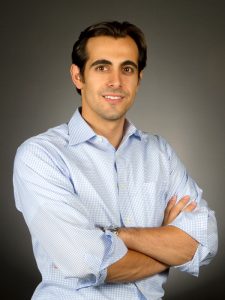
Mounir El Asmar
“At the time, I was looking for reversible versus irreversible choices,” El Asmar said. “A solid education in engineering allows you to pursue so many exciting opportunities, both in and outside the fields of engineering.”
Through graduate school, he would continue his multidisciplinary education in engineering and business, and his nontraditional background gave him the perfect foundation for his eventual research on delivering a sustainable built environment.
El Asmar is an assistant professor with the Del E. Webb School of Construction, part of the School of Sustainable Engineering and the Built Environment, one of the Ira A. Fulton Schools of Engineering at Arizona State University. He also is a Senior Sustainability Scientist with ASU’s Global Institute of Sustainability, and the co-director of ASU’s National Center of Excellence on SMART Innovations for Urban Climate and Energy. SMART stands for Sustainable Materials and Renewable Technologies.
He teaches sustainable construction, strength of materials, and alternative project delivery systems, and his research is focused on evaluating the performance of sustainable infrastructure, cost engineering and innovative project delivery.
El Asmar’s father was the CEO of a bank, and his mother ran a gift boutique.
Everyone in his family for three generations has worked in business and economics-related fields, and two of his three siblings are bankers. But El Asmar had a passion for engineering and was torn between the fields of economics, business and engineering.
He enrolled in the American University of Beirut, where many of the professors received graduate degrees from the most prestigious U.S. universities, and he focused on mechanical engineering, which covered a broad spectrum of engineering disciplines.
“The first two years you take classes in civil, electrical and computer engineering, a little bit of everything,” he said.
He was inspired by a professor from the University of Wisconsin, who came to speak in Beirut, and applied to the university for graduate school. He earned a master’s in construction engineering and management, and stayed on to earn a doctorate in civil and environmental engineering, with a minor in business.
The combination of engineering and business was a perfect fit.
While in graduate school, he worked at the Wisconsin Department of Transportation, and helped create a conceptual cost-estimating tool for large transportation projects.
“Many large infrastructure projects often cost more that their original cost estimates,” El Asmar said. “Agencies would propose a budget to build a specific number of roads, for example, and later realize that because of unexpected cost growths, they will only be able to deliver to the taxpayers a portion of these roads with the allotted budget. This is a prime example of how engineering, business, and politics are connected and can have ripple effects on one another.”
There is always a need to estimate costs earlier and more accurately.
El Asmar’s tool uses historical cost data and allowed the Wisconsin Department of Transportation to estimate costs in the very early phases of design, with an accuracy of plus or minus 15 percent.
“That’s not very common,” El Asmar said. “Now the tool is required on all their large projects.”
El Asmar is also extremely interested in alternative delivery systems, such as integrated project delivery, a system that brings key project stakeholders together early in the project, often before the design is completed, to give initial feedback, make suggestions and point out challenges.
“In this process, everyone, including all key constructors, such as the mechanical and electrical trades, meet with the engineers before the design is started,” El Asmar said. “They share information and requirements to balance all stakeholders’ needs and achieve the highest possible project performance for all those involved.
“It is a more integrated process and we have measured its superior performance. There are more up-front costs, but integration can save money in the long run. Integrated project delivery is often not recommended for small-scale projects, but for complex projects like a $500 million hospital.”
El Asmar compared integrated project delivery with more traditional processes. He developed an overall project performance model, the Project Quarterback Rating to evaluate performance, and found significant improvements with integrated project delivery.
“It provides higher quality facilities, faster, at no significant cost increase,” El Asmar said. “In the beginning, people are generally opposed to change, but as more studies show success, integrated project delivery is becoming more accepted.”
El Asmar also studies the energy and water consumption of LEED-certified buildings of large organizations, including ASU.
He currently advises six doctoral students, four master’s candidates and two undergraduate research students.
“Students know that integration and sustainable performance are the future, where the industry is going,” he said.
In his classes, El Asmar has students work on real-life projects, and invites industry leaders to evaluate student projects and provide feedback.
He and his students have been invited around the world to present their findings on project delivery, and he uses a scheduling software “on steroids” to keep up with the globetrotting dates.
When he’s not on the job, he likes to work out. He was a high school swimming champion, and was part of the sailing club in Wisconsin. He now travels to California every summer to sail. His favorite books include “Outliers: The Story of Success,” by Malcolm Gladwell.
These faculty profiles were written as part of the celebration of the grand opening of the College Avenue Commons, the home of the Del E. Webb School of Construction, in 2014.
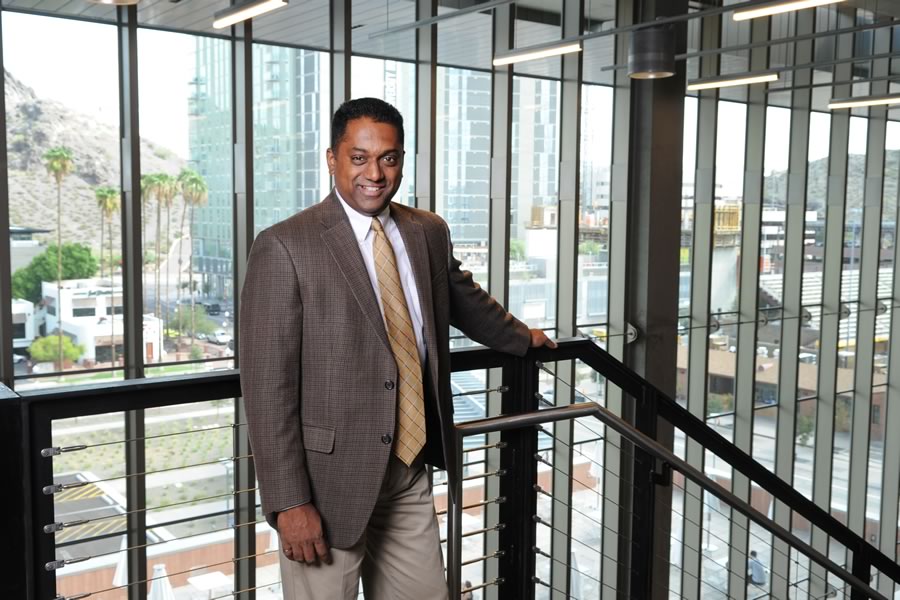
Sam Ariaratnam: Digging his way to the future
“ASU is a dynamic place. In real estate, it’s location, location, location. It’s the same in education. The Phoenix metro area has a dynamic construction industry and it is helping us build a world-class program.”Sam Ariaratnam is digging his way to the future. But...
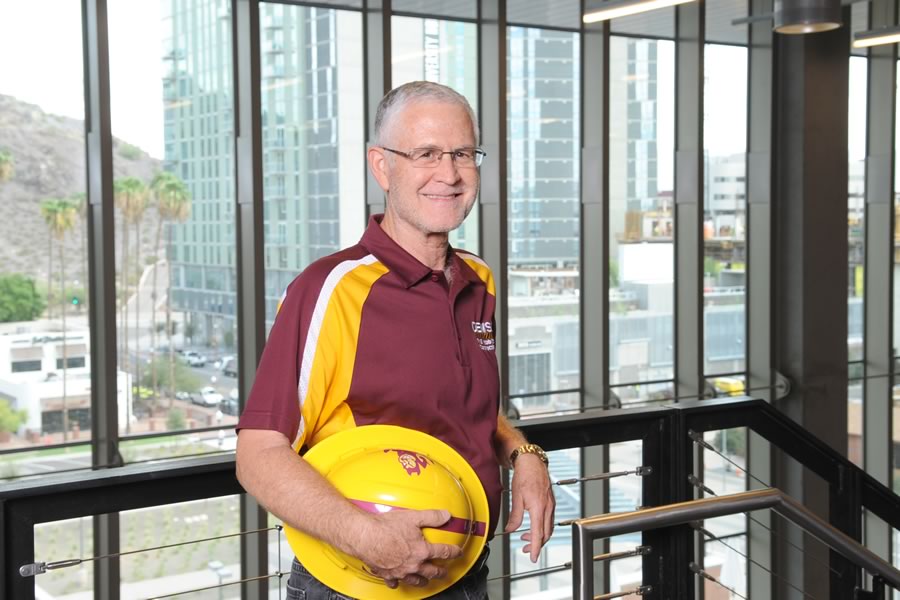
Allan Chasey: Embracing his construction destiny
“I enjoy seeing buildings going up. There are few professions where you can go back 20 to 30 years later and say, ‘I had something to do with that.'”Editor’s note: Allan Chasey retired in the fall of 2016, but his construction management legacy lives on in the DEWSC....
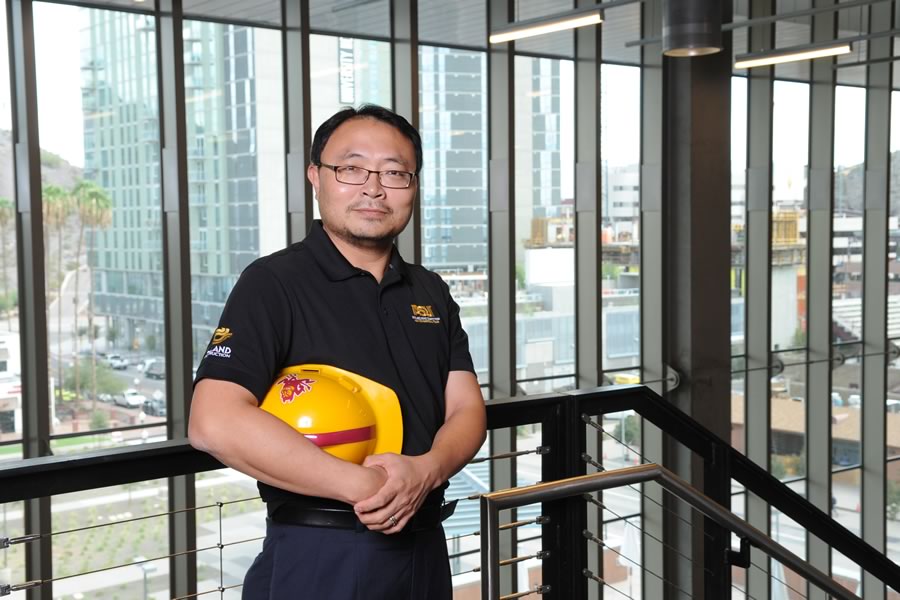
Oswald Chong: Seeking truth through data
Oswald Chong labels himself a skeptic. “I always question people indirectly as I don’t like to confront people directly,” said Chong, an associate professor in the Del E. Webb School of Construction, part of the School of Sustainable Engineering and the Built...
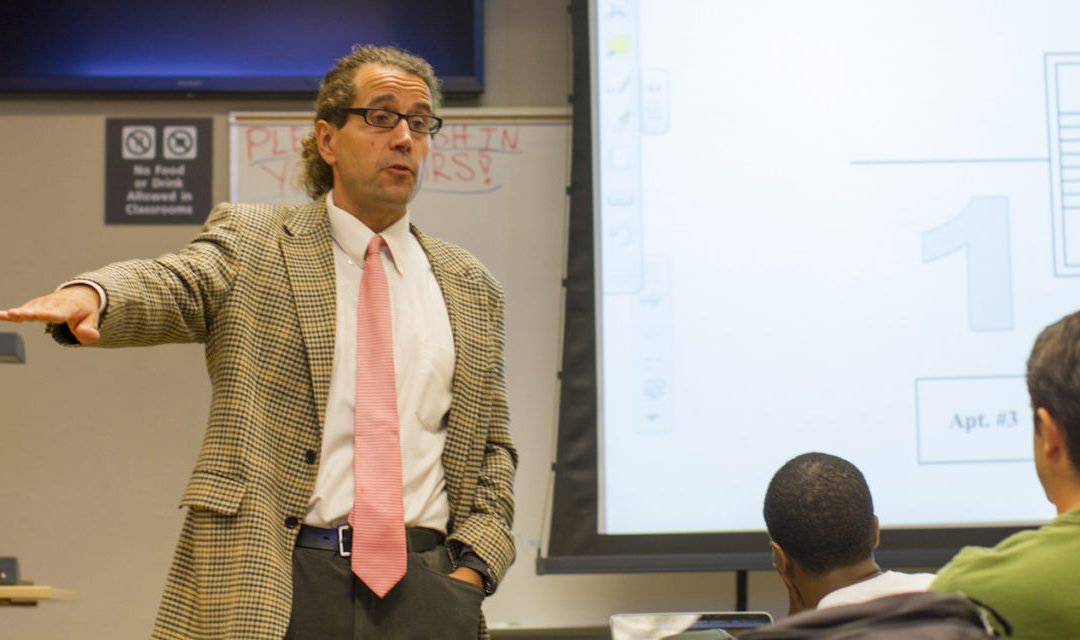
David Grau: The human element and variability
David Grau worked for years in the design and construction industry, and saw firsthand that the large complexity intrinsic to the delivery of capital projects resulted in variability and uncertainty. In turn, he observed that such uncertainty negatively impacts the...
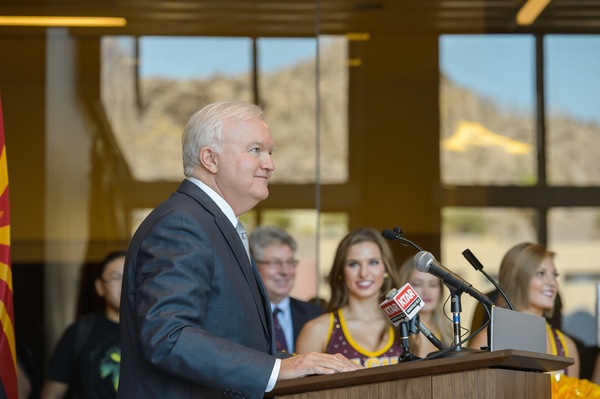
Edd Gibson: Leading through teaching and planning
“Planning is the intersection between business and engineering,” Gibson said. “Why are we doing the project? How should we proceed? What is the scope? It’s all about people and risk management, and this is when you have the largest influence on creating a successful...
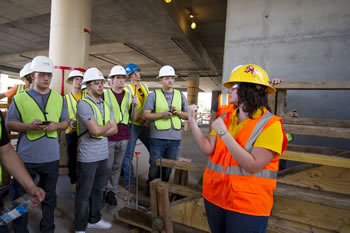
Kristen Parrish: A love affair with physics and teaching
Kristen Parrish – Sustainability Profile from ASU Engineering on Vimeo Kristen Parrish fell in love with physics in her 10th grade class in Michigan. “It was kinematic equations, figuring out how far you could drive a car up a ramp,” Parrish said. “I asked my...
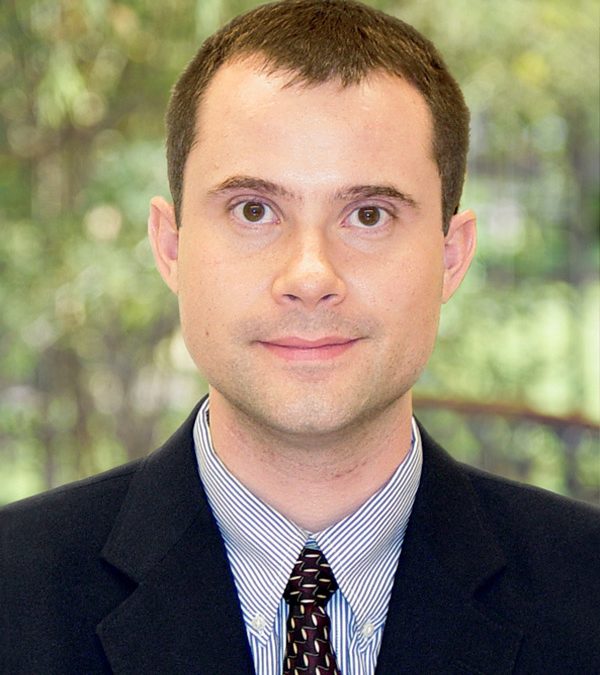
Kenneth Sullivan: ‘It’s all about people’
Kenneth Sullivan will tell you: Project performance? It is all about people. It always has been. “An efficiently engineered process can drive performance outcomes, but to truly optimize, the capability of the key individuals participating in that process is key. When...